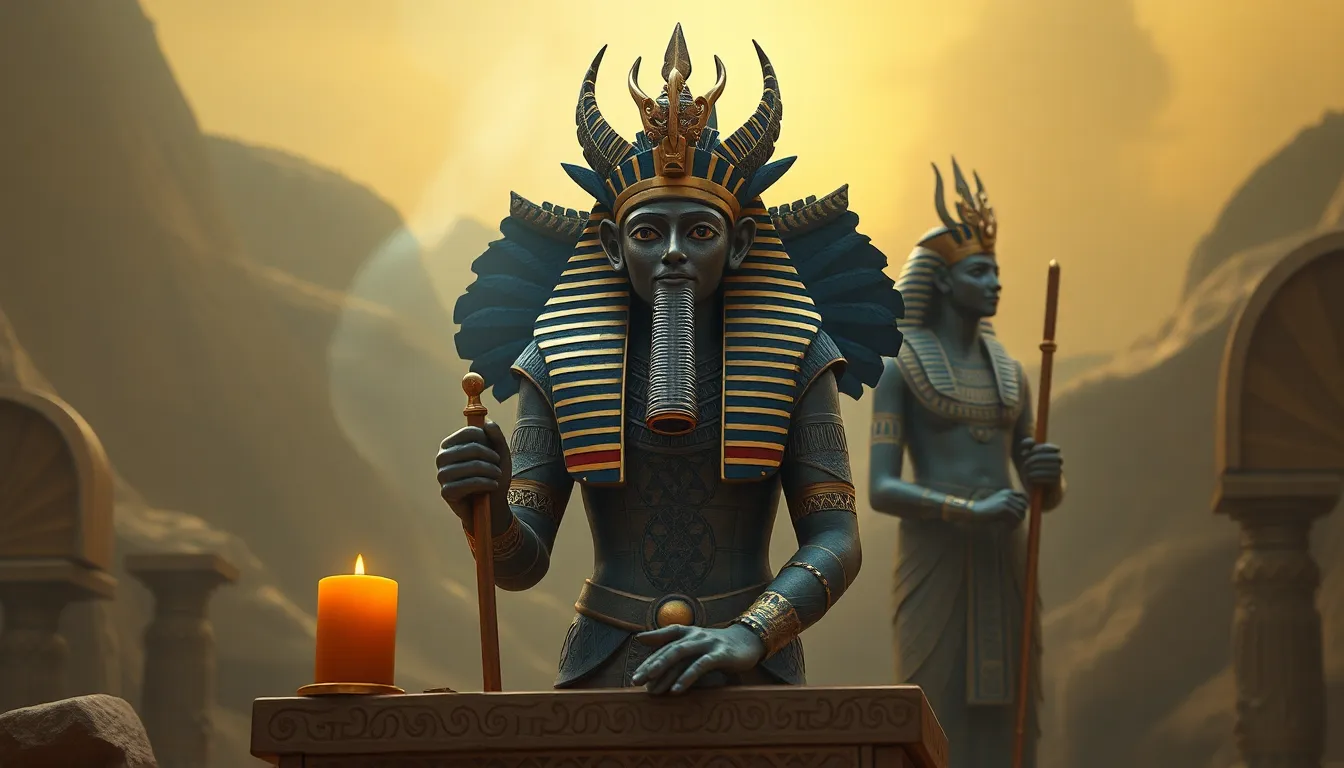The Role of Rituals in the Worship of Egyptian Deities
I. Introduction
Ancient Egyptian religion was a complex system of beliefs and practices centered around a pantheon of gods and goddesses. These deities played a crucial role in the lives of the ancient Egyptians, influencing everything from agriculture to mortality. Rituals were fundamental to connecting with these divine beings, providing a structured way for individuals and communities to express their devotion, seek favor, and understand the mysteries of life and death.
This article explores the significance of rituals in the worship of Egyptian deities, highlighting their historical context, types, spaces of worship, symbolism, impact on daily life, decline, and enduring legacy.
II. Historical Context of Egyptian Deities
The pantheon of Egyptian gods and goddesses is vast, with each deity embodying different aspects of life and nature. Key figures include:
- Ra: The sun god, representing creation and life.
- Osiris: The god of the afterlife, associated with resurrection.
- Isis: The goddess of magic and motherhood.
- Anubis: The god of mummification and the afterlife.
The evolution of divine worship in ancient Egypt reflects changes in society, politics, and culture. From the early dynastic period to the Ptolemaic era, the worship of certain gods rose and fell in prominence, often influenced by the ruling pharaohs.
Mythology played a pivotal role in these rituals, as many practices were rooted in stories that explained the universe’s workings and the gods’ desires. Understanding these myths was essential for fulfilling the rituals correctly.
III. Types of Rituals in Egyptian Worship
Rituals in ancient Egypt varied widely, serving different purposes throughout the year and across life stages. Key types include:
A. Daily rituals and offerings
Daily rituals were performed by priests in temples, including:
- Morning offerings of food and drink to the deities.
- Ritual cleansing of statues of gods.
- Recitation of hymns and prayers to invoke divine presence.
B. Seasonal festivals and their significance
Festivals were vital communal events that celebrated the agricultural calendar and honored specific deities. Notable festivals included:
- The Opet Festival, celebrating the fertility of the Nile and the rejuvenation of the pharaoh.
- The Wepet-Renpet Festival, marking the New Year and the start of the planting season.
- The Khoiak Festival, honoring Osiris and the cycle of life and death.
C. Funerary rituals and their role in the afterlife
Funerary rituals were crucial for ensuring a safe passage to the afterlife, including:
- Embalming and mummification processes.
- Burial ceremonies with offerings to sustain the deceased.
- Rituals performed to guide the soul in the afterlife, such as the “Weighing of the Heart.”
IV. The Physical Spaces of Worship
Temples served as the primary centers of ritual activity in ancient Egypt, designed to facilitate the connection between the divine and the mortal.
A. Temples as centers of ritual activity
Each temple was dedicated to a specific deity and featured various rooms for different rituals. The inner sanctum housed the deity’s statue, where only priests could enter.
B. Sacred spaces and their architectural features
Key architectural features of temples included:
- Pylons: Monumental gateways marking the entrance.
- Hypostyle halls: Large rooms with columns, often used for public worship.
- Sacred lakes: Pools for purification rituals.
C. Role of priests and priestesses in conducting rituals
Priests and priestesses played a vital role in performing rituals, acting as intermediaries between the gods and the people. They underwent strict training and adhered to rigorous purity standards.
V. Symbolism and Objects Used in Rituals
Rituals were rich in symbolism, utilizing various objects that held significant meanings.
A. Sacred symbols and their meanings
Key symbols included:
- The Ankh: Symbol of life.
- The Eye of Horus: A symbol of protection and royal power.
- The Scarab Beetle: Representing rebirth and regeneration.
B. Importance of ritual objects (e.g., statues, altars)
Ritual objects were essential for worship, including:
- Statues representing deities, which were believed to house divine essence.
- Altars for offerings and sacrifices.
- Incense burners to create a fragrant atmosphere for the gods.
C. The role of music and dance in rituals
Music and dance were integral to rituals, believed to please the gods and enhance the spiritual atmosphere. Instruments like harps, flutes, and percussion were commonly used.
VI. The Relationship Between Rituals and Daily Life
Religious rituals permeated everyday life in ancient Egypt, influencing societal norms and personal practices.
A. Influence of religious rituals on societal norms and values
Rituals reinforced social hierarchies, with the pharaoh seen as the divine ruler whose rituals ensured the country’s prosperity.
B. Personal rituals and their significance to individuals
Individuals often engaged in personal rituals, such as:
- Daily prayers and offerings at home shrines.
- Amulets and charms for protection.
- Rituals for health and fertility.
C. Rituals as a means of community cohesion
Community rituals fostered a sense of belonging and unity, bringing people together to celebrate and honor their shared beliefs.
VII. The Decline of Ritual Practices
Despite their importance, traditional rituals began to decline due to various factors.
A. Factors leading to the decline of traditional rituals
Key factors included:
- Political changes and the rise of foreign powers.
- Shift towards monotheism, particularly with the rise of Christianity and Islam.
B. Impact of foreign influences and changing beliefs
As foreign cultures integrated into Egyptian society, traditional beliefs and practices were challenged, leading to a gradual decline in ritual observance.
C. Preservation of rituals in modern contexts
Some ancient rituals have been preserved or adapted in modern practices, reflecting the enduring legacy of Egyptian spirituality.
VIII. Conclusion
Rituals were essential in the worship of Egyptian deities, serving as a bridge between the divine and the mortal realm. From daily offerings to elaborate festivals, these practices shaped the spiritual landscape of ancient Egypt.
The legacy of Egyptian rituals continues to influence modern spirituality and cultural practices, inviting further exploration into the complexities of ancient Egyptian beliefs and their enduring impact on humanity.




